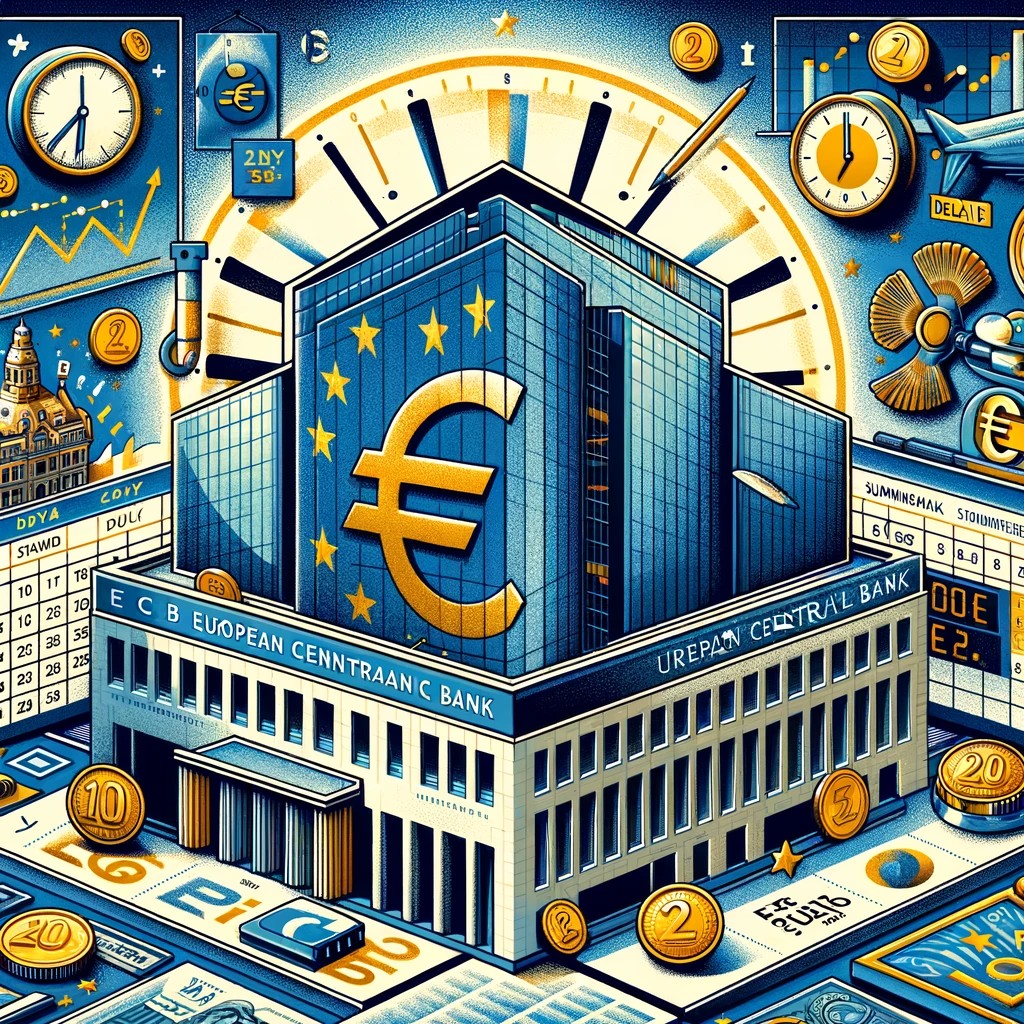The European Central Bank (ECB), standing at the helm of monetary policy for the Eurozone, finds itself in a balancing act that would give any tightrope walker a run for their money. As economic players and observers alike speculate on the timing of rate cuts, a slew of data and expert opinions whirl around, creating a tornado of expectations. But let’s cut through the noise and dive into what’s really at stake here.
Assessing Inflation and Economic Dynamics
We’re all on the edge of our seats, waiting to see if the ECB will slash those rates. It’s like a financial soap opera, with the main character being inflation – that ever-elusive figure that keeps economists up at night. The ECB’s target? A cool 2%. But as we know, inflation has been playing hard to get, with recent figures doing a bit of a cha-cha, sliding up and down the scale.
Amidst this economic balancing act, a notable point of focus is the manufacturing sector. Recent studies suggest that monetary policy shifts tend to have a more pronounced impact on manufacturing compared to services. This sector, often seen as the economic weather vane, has already shown signs of recession in recent quarters. A slowing manufacturing sector usually precedes a similar trend in services, suggesting broader economic implications. This dynamic adds another layer to the ECB’s decision-making process, highlighting the nuanced impact of monetary policy across different sectors.
Let’s not forget about the economy’s performance either. It’s like watching a suspense movie, wondering whether we’ll see a plot twist in the form of a recession or if we’ll just coast along with mild cooling. With economic indicators doing their dance, the ECB is like a cautious DJ, trying to pick the next track that will keep the party going without causing a scene.
ECB’s Great Rate Debate
Now, onto the million Euro question: When will the ECB start trimming those rates? The financial markets are like fortune tellers, peering into their crystal balls, making bets on whether we’ll see action as early as spring. But here’s the kicker – it’s not just about when, but why and how. The ECB isn’t going to jump the gun; they’re waiting for the right moment, like a cat ready to pounce.
Furthermore, global economic comparisons play a crucial role. The Eurozone’s economic health, relative to the more robust U.S. economy, could prompt the ECB to act sooner rather than later. The U.S., with its stronger growth trajectory, seems to have the luxury of patience, unlike the Eurozone. This contrast in economic conditions across the Atlantic could influence the timing and nature of the ECB’s rate cuts, adding an international dimension to an already complex decision-making process.
We’re seeing a tug-of-war between the need to keep inflation in check and the desire to boost an economy that’s not exactly running a sprint. It’s a delicate balance, like trying to walk on a tightrope while juggling – not for the faint-hearted.
But let’s not overlook the international context. The ECB isn’t operating in a vacuum. They’re keeping a keen eye on what’s happening across the pond with the Federal Reserve, adding another layer of complexity to this already intricate puzzle.
So, what’s the bottom line? The ECB rate cut saga is a tale of patience, precision, and a whole lot of data crunching. It’s about reading the economic tea leaves and making a move that’s timed just right. We’re all waiting with bated breath to see how this story unfolds. Will they, won’t they? Only time (and a whole lot of economic indicators) will tell. Stay tuned, folks, because this is one financial drama you won’t want to miss.





